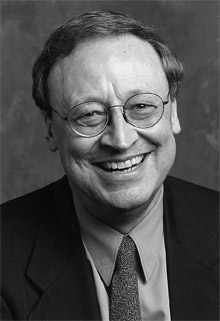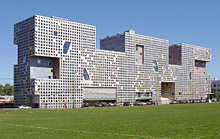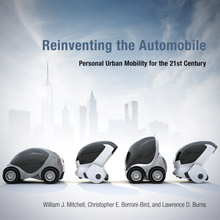
William J. Mitchell has died
 |
| photo: Webb Chappel |
Mitchell was born in 1944 and grew up in rural Australia. He completed his undergraduate studies at the University of Melbourne. His subsequent journeys took him to the USA. He earned his two master's degrees at Yale (Master of Environmental Design) and Cambridge (Master of Arts). He was a member of the Australian Institute of Architects RAIA and the American Academy of Arts and Sciences. He received six honorary doctorates. He chaired the National Academy’s Committee on Information Technology and Creativity.
Mitchell was regarded as one of the leading theorists of contemporary urbanism. Through his research group "Smart Cities", run at the MIT Media Lab, he explored and promoted new approaches to integrating modern technology into the infrastructure of contemporary cities. The goal of his work was to create a city that is welcoming to its residents and to use resources more efficiently. He compared cities to living organisms and their infrastructure to neural networks. Among the significant achievements of his team are the designs for the electric urban vehicle CityCar and the bicycle GreenWheel.
William Mitchell served as a professor of architecture, media arts, and sciences at MIT since 1992. Prior to that, he taught at architecture schools in Los Angeles and Harvard. He significantly influenced the MIT School of Architecture, especially as its dean from 1992 to 2003. Under his leadership, the school established itself as an innovative institution examining the impact of digital technologies on architecture and urbanism. During his tenure, he expanded the faculty with a number of young and capable teachers. He emphasized the importance of teaching the visual arts within MIT. He was particularly interested in exploring the relationships between the real environment, virtual reality, and human society.
 |
| Steven Holl Architects: SIMMONS HALL, MIT, Cambridge (1999-2002) |
Mitchell attached great innovative significance to the new buildings. At the opening of Gehry's Stata Center in 2004, he noted in his speech that "leading scientific institutions, such as MIT, have a special responsibility to formulate architectural projects not only as examples of rational investment of allocated funds but as imaginative and critical contributions to our continually evolving culture." He recorded his experiences from the campus construction during an extended weekend spent in a hotel room in Dublin, and MIT Press published them in 2007 under the title Imagining MIT.
 |
Among his most significant publications are World's Greatest Architect: Making, Meaning and Network Culture (2008); Placing Words: Symbols, Space, and the City (2005), Me++: The Cyborg Self and the Networked City (2003); e-topia: Urban Life, Jim-But Not As We Know It (1999); High Technology and Low-Income Communities (1999); City of Bits: Space, Place, and the Infobahn (1995); The Reconfigured Eye: Visual Truth in the Post-Photographic Era (1992); The Logic of Architecture: Design, Computation, and Cognition (1990) and Computer-Aided Architectural Design (1977).
Since 1994, he chaired the editorial board of the university press MIT Press and since 2000 he was a member of its board of trustees.
The English translation is powered by AI tool. Switch to Czech to view the original text source.
0 comments
add comment





